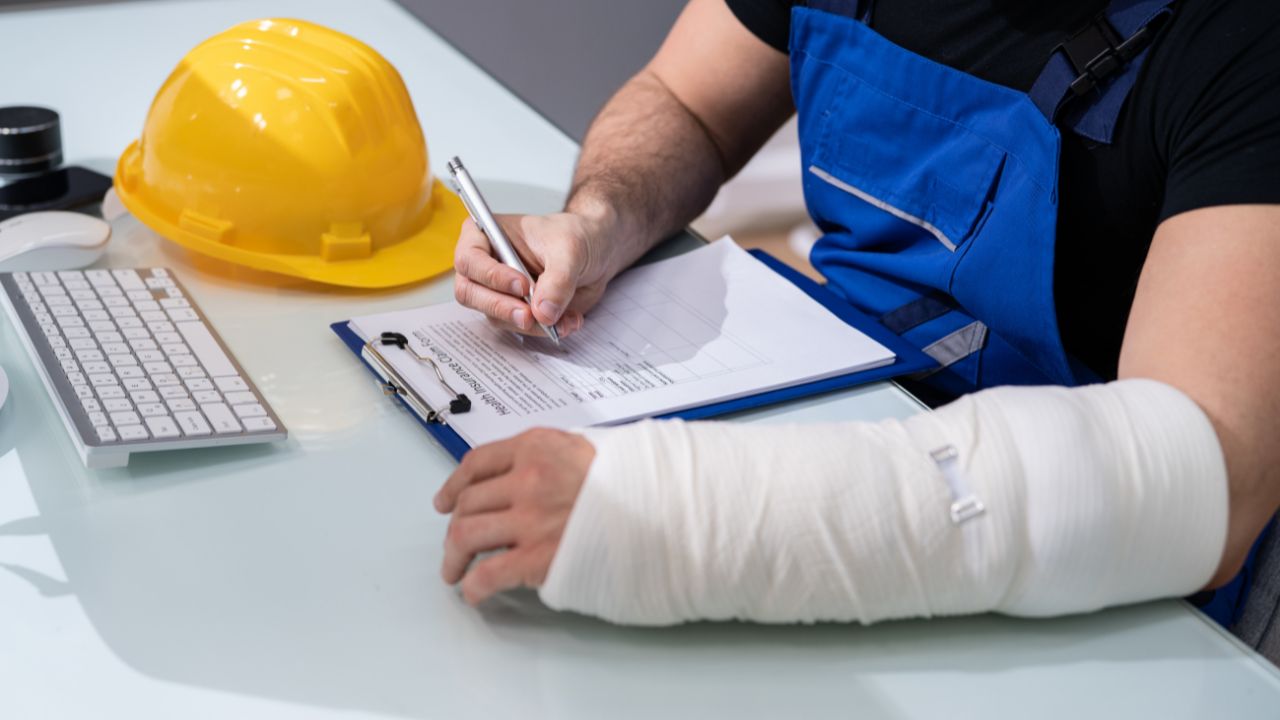Have you ever suffered a work-related injury or illness in Australia? If so, you’re likely familiar with the confusing world of worker compensation claims. The process can feel overwhelming, leaving you unsure of your rights and next steps.
Whether you’re an employer seeking to support your injured employees or an employee needing to access benefits, understanding the step-by-step process is crucial. In Australia, where workplace safety and employee rights are paramount, having a comprehensive guide can make all the difference.
This guide aims to address these challenges. By breaking down the process into manageable steps, it will provide clear, practical advice for both employees and employers. Our goal is to make the process of filing a Worker Compensation Insurance Claim less difficult and more transparent, helping you to navigate the system with confidence. Let’s get started.
What is Worker Compensation Insurance
Worker Compensation is a form of insurance that can provide wage replacement and medical benefits to employees injured in the course of employment. It serves as a safety net, ensuring that workers are protected financially in the event of workplace accidents. In Australia, as in many other countries, it’s not just a good practice – it’s a legal requirement.
 Are you Eligible?
Are you Eligible?
In Australia, Worker Compensation is not limited to full-time employees. It extends to a variety of workers including:
- Full-time employees
- Part-time employees
- Casual workers
- Subcontractors in some cases
A “work-related injury or illness” is defined as any injury or disease that arises out of or in the course of employment. This includes injuries sustained at the workplace, illnesses caused by the nature of the work, and in some cases, injuries sustained while travelling for work.
However, there are certain exclusions and limitations to eligibility. For instance:
- Injuries sustained while commuting to and from work are typically not covered.
- Injuries resulting from serious and willful misconduct may not be eligible for compensation unless the injury results in death or serious and permanent impairment.
It’s important to consult with a legal expert or your worker compensation insurer to understand the specifics of your situation. Remember, each case is unique and this guide provides general information that may not apply to all scenarios.
Looking for workers compensation insurance? Get in touch to get a free quote.
Step-by-Step Guide to Filing a Claim
Step 1: Reporting the Injury
Promptly reporting a work-related injury to your employer is crucial for several reasons. Firstly, it allows your employer to take immediate action to ensure your well-being and prevent further harm. Secondly, it initiates the process of filing a worker compensation claim, which can be time-sensitive. Lastly, it helps your employer identify and rectify potential safety hazards to prevent similar incidents in the future.
Whom to Report?
Here are some common reporting channels:
- Immediate Supervisor
- Human Resources (HR)
- Health and Safety Representative
- Online Reporting System
What to Report?
When reporting an injury, it’s important to provide specific information to help your employer understand the incident and take appropriate action. This includes:
- Date and Time
- Location
- Details of the Injury (Describe the nature of the injury or illness. What part of your body is affected? How severe is it? If possible, describe the cause of the injury).
- Witnesses if any
Documentation plays an important role in the claim process. Read more about it now.
Step 2: Seeking Medical Attention
After a workplace injury, it’s crucial to seek immediate medical attention, regardless of the perceived severity of the injury. Not only is this important for your health, but it’s also a critical step in the worker compensation claim process.
- Immediate Medical Attention: Even if an injury seems minor, it’s important to have it assessed by a medical professional. Some injuries may not show symptoms immediately but can become serious if left untreated. Always follow the doctor’s recommendations for treatment and recovery.
- Authorised Medical Providers: In the context of worker compensation, treatment should ideally be sought from authorised medical providers. These are healthcare professionals or facilities that are recognised by the worker compensation insurance. They understand the documentation and procedures required for claim processing. However, in emergencies, seek immediate care from the nearest healthcare provider.
- Potential Costs: The cost of medical treatment is typically covered by worker compensation insurance. However, there may be certain out-of-pocket expenses depending on the specifics of your insurance plan. It’s important to clarify these details with your insurer.
- Medical Records: Keep a thorough record of all medical treatments received, including doctor’s notes, prescriptions, and medical bills. These documents serve as evidence of the injury and the incurred expenses, and they play a crucial role in the claim process.
Remember, your health is the top priority. Seek medical attention promptly and follow through with the recommended treatment plan. This not only aids your recovery but also supports your compensation claim.
Click here to read this blog about preventing workplace injuries in the first place.
Step 3: Filing the Claim Form
In Australia, the process of filing a Worker’s Compensation claim can vary depending on the state or territory. Each jurisdiction has its specific forms and procedures.
- Types of Claim Forms: The claim form you need to complete will depend on the state or territory where you work. For example, if you’re in New South Wales, you would use a form from the State Insurance Regulatory Authority (SIRA). In Victoria, you would use a form from the WorkSafe Victoria.
- Obtaining and Completing the Form: Claim forms can usually be obtained from your employer, your insurer, or the relevant regulatory authority’s website. The form will ask for details about your injury and how it occurred. Be as detailed and accurate as possible when completing the form.
- Employer’s Role: Your employer plays a key role in the claim process. They should provide you with the necessary forms and information, report the injury to their insurer, and support you throughout the claim process. Employers are legally obligated to cooperate with the claim process and cannot discourage you from filing a claim.
Remember, filing a claim is a legal process, and it’s important to be truthful and accurate in all your communications. Providing false or misleading information can lead to penalties and could jeopardise your claim. Always seek professional advice if you’re unsure about any aspect of the claim process.
Looking for workers compensation insurance? Get in touch to get a free quote.
 Step-4: After Filing the Claim Form
Step-4: After Filing the Claim Form
Once you’ve filed your Worker Compensation claim form, there are several steps you should follow:
- Follow-Up: Regularly follow up with your employer or insurer to check the status of your claim. It’s important to ensure that your claim is being processed promptly.
- Keep Records: Maintain a record of all communications related to your claim. This includes copies of forms, medical reports, and correspondence with your employer or insurer. These documents can be crucial if there are any disputes about your claim.
- Continue Medical Treatment: Continue to follow your doctor’s advice and treatment plan. If your condition changes or worsens, inform your doctor and insurer immediately.
- Cooperate with Investigations: Your insurer may investigate to verify the details of your claim. Cooperate fully with this process, providing any additional information or documentation as requested.
- Return to Work Plan: If your injury results in time off work, you may need to develop a return to work plan with your employer and healthcare provider. This plan outlines the steps you will take to gradually return to your normal duties.
With the right knowledge and resources, you can confidently navigate the process, ensuring that you’re adequately protected in the event of a workplace injury.
Remember, you’re not alone in this journey. Tradies365 is here to help. As a trusted provider of insurance and claim services, we’re committed to supporting you every step of the way.
Don’t hesitate to reach out to us for any assistance or queries related to worker compensation insurance in Australia. Let’s work together towards a safer and more secure workplace.
Contact Tradies365 today, because your safety is our priority.
FAQs
What is the difference between worker compensation and tradesman insurance?
Worker compensation and tradesman insurance, while both related to work-related risks, cover different sets of individuals and situations.
Worker’s compensation is a mandatory insurance program designed to protect employees who suffer work-related injuries or illnesses. It provides financial benefits and medical treatment, regardless of who was at fault for the incident. Employers are legally obligated to carry this insurance for their eligible employees.
Tradesman insurance, on the other hand, is a type of business insurance tailored for self-employed tradespeople like plumbers, electricians, and builders. It protects them from various liabilities, including property damage, bodily injury to third parties, and legal expenses arising from their work activities. This insurance is not mandatory but highly recommended for tradespeople to mitigate financial risks associated with their work.
What is tradie insurance?
Insurance for Tradies, also known as tradesman insurance, is a type of business insurance specifically designed for self-employed individuals and small businesses in the trades industry. It protects them from financial losses arising from various work-related incidents, such as:
- Public liability: Covers costs if you accidentally injure a third party or damage their property while working.
- Tools and equipment cover: Protects your valuable tools and equipment from theft, damage, or loss.
- Personal accident and illness: Provides financial support if you’re unable to work due to an accident or illness.
- Product liability: Covers claims if someone is injured or suffers property damage due to a faulty product or service you provided.
Read more:
Do sole traders need workers’ compensation insurance
Note: The material offered here is for informational purposes only. It does not constitute legally binding advice and should not be a substitute for a consultation with an insurance expert.

 Step-4: After Filing the Claim Form
Step-4: After Filing the Claim Form